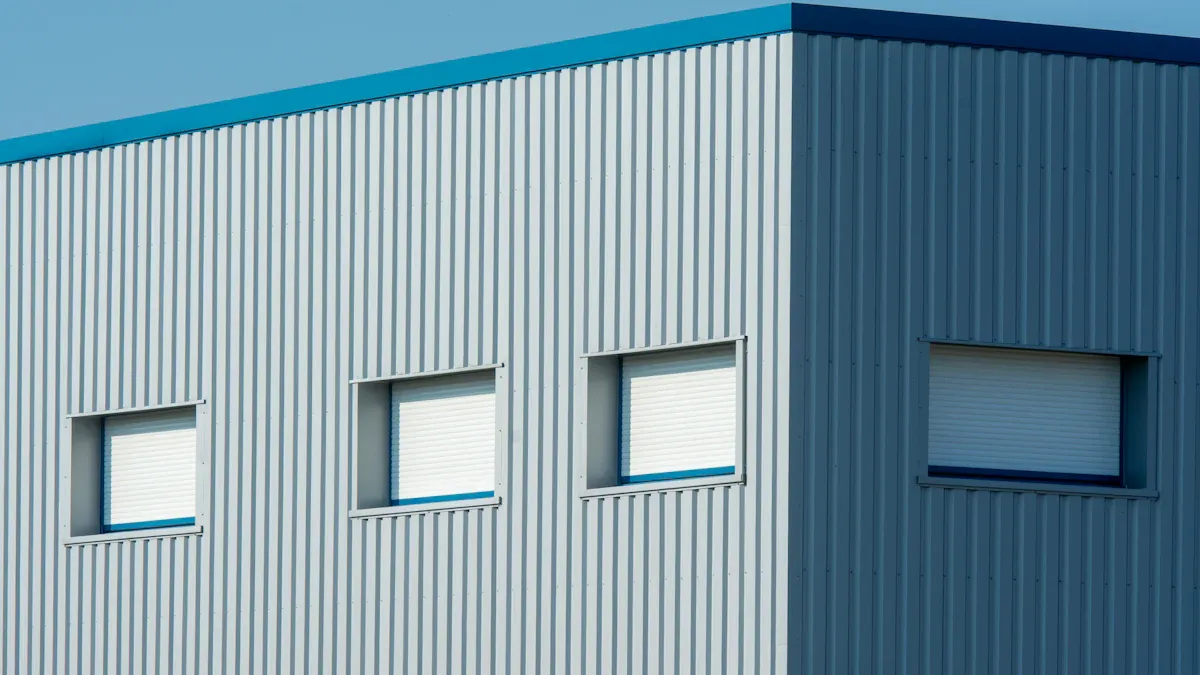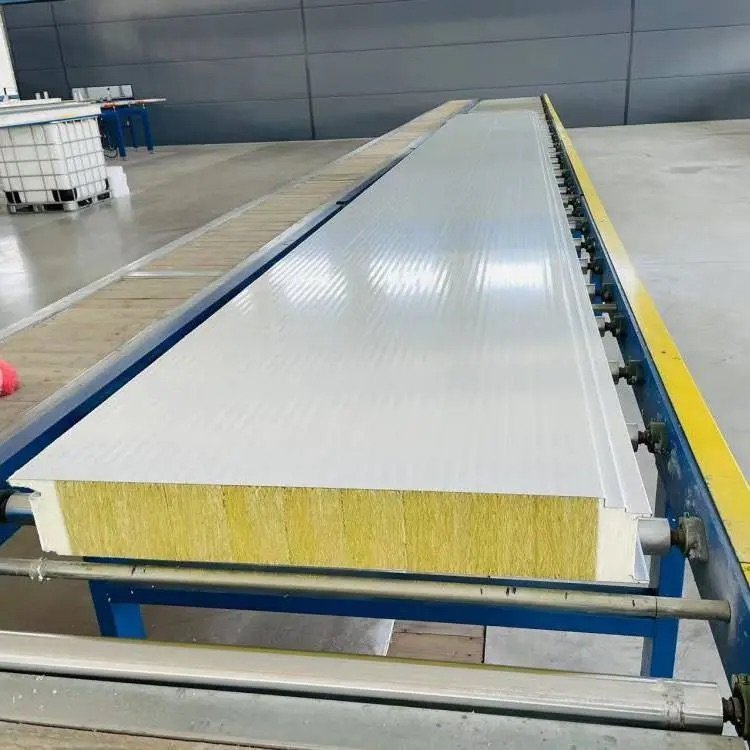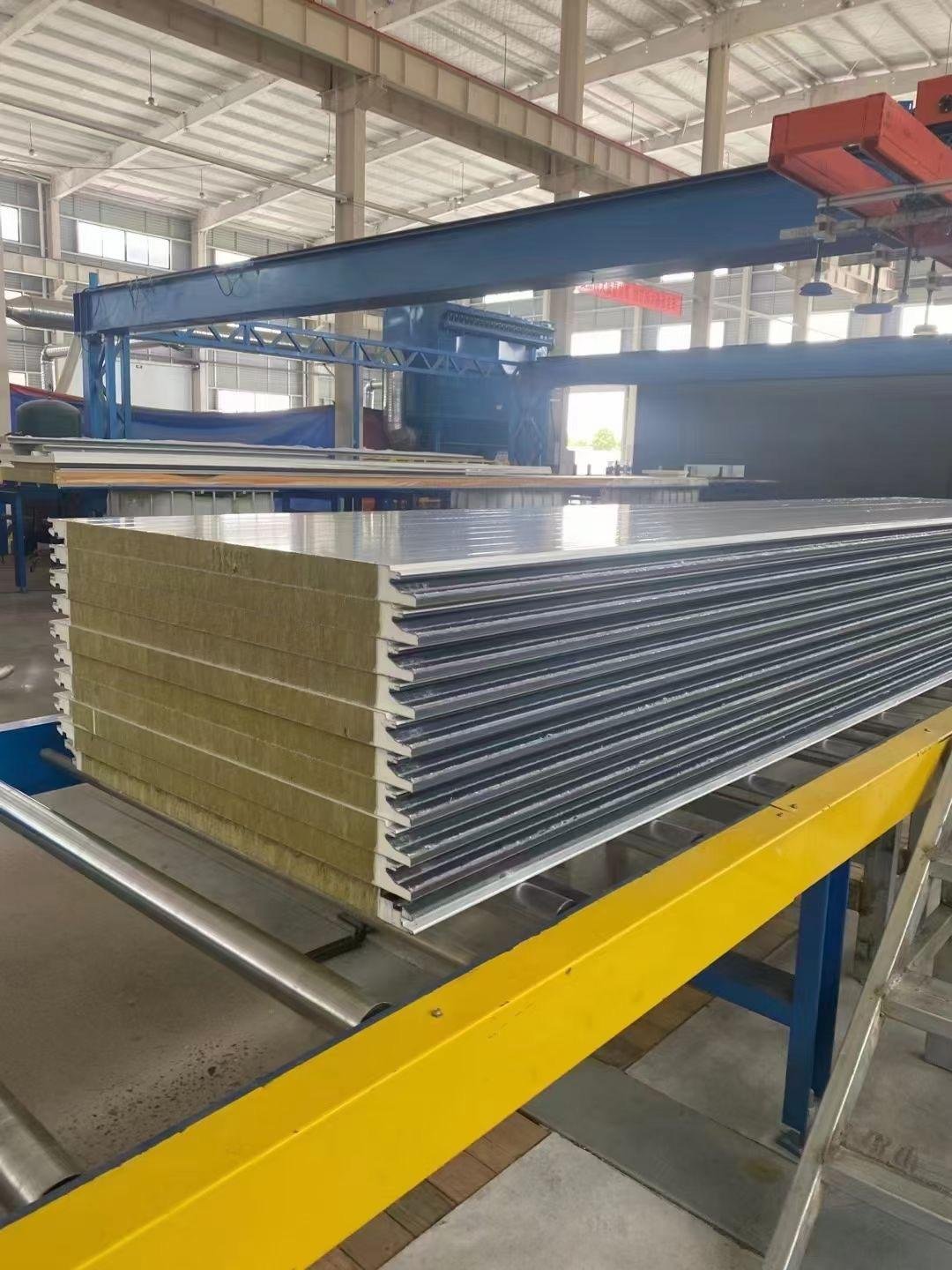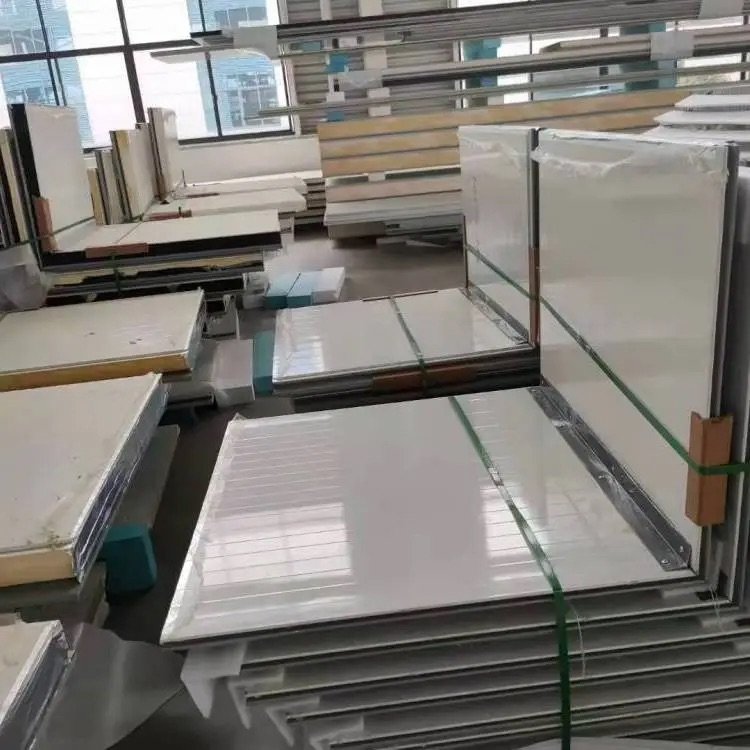
The PU Sandwich Panel price per square meter varies for several reasons.
Utilizing high-quality materials, such as strong steel and PU/PIR cores, enhances the durability and fire resistance of the panels, which can cost between $7 to $15 per square meter.
The use of modern machines improves panel quality, but this also influences the PU Sandwich Panel price.
Features like thicker steel and denser foam can increase the PU Sandwich Panel price due to their positive impact on performance.
Fire safety ratings and certifications contribute to higher production costs, affecting the overall PU Sandwich Panel price.
Custom designs can add up to 20% to the PU Sandwich Panel price, resulting in higher costs for the panels.
Key Takeaways
Strong materials like thick steel and solid cores raise PU Sandwich Panel prices but make them last longer and insulate better.
Using machines to make panels can cut costs and improve quality, which is great for saving money.
Buying certified PU Sandwich Panels keeps you safe, saves energy, and lowers energy bills over time.
Thicker panels insulate and support better, making them worth the extra cost for long-term use.
Balancing price and quality is important; better panels cost more now but save on fixes and energy later.
Raw Materials and Their Impact on PU Sandwich Panel Price
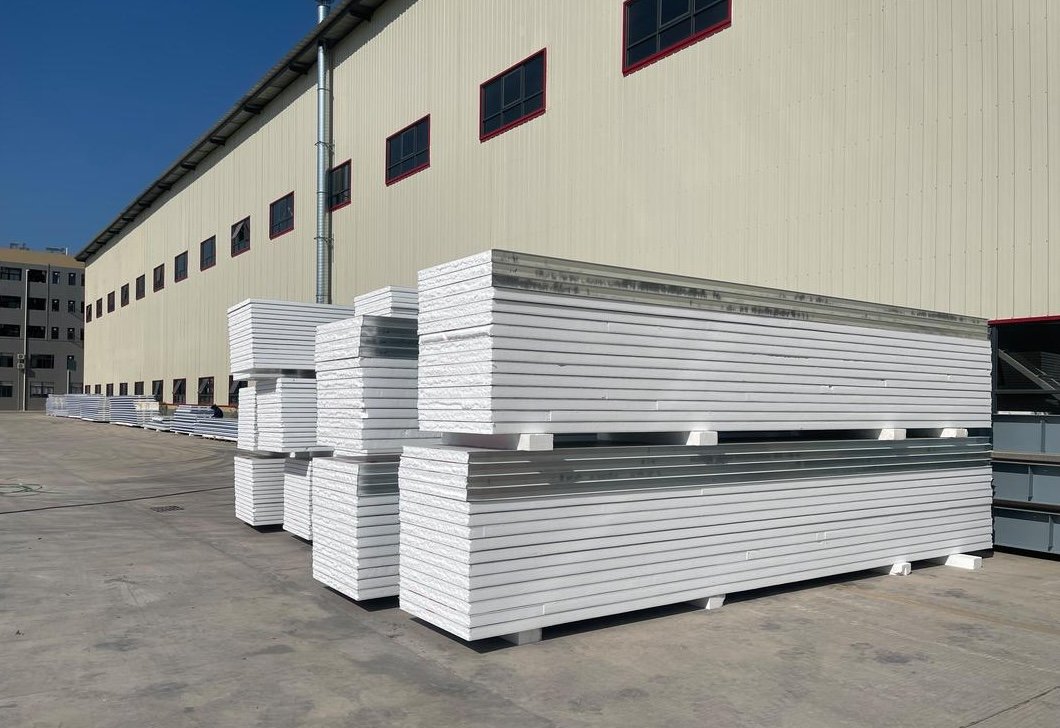
Types of Core Materials
The core material greatly affects the PU Sandwich Panel price. These panels use either chemical or natural cores. Most panels have chemical cores like rigid polyurethane, EPS, or mineral wool. In 2020, chemical cores were the most popular and are expected to grow by 7.01% yearly. This is because chemical cores insulate better and last longer, making them worth the higher price. Natural cores are eco-friendly but not used much. They don’t perform well in extreme conditions.
Material Quality and Cost Implications
Better raw materials mean higher PU Sandwich Panel prices. Dense polyurethane cores and thick steel make panels stronger and better at insulating. But these materials cost more. Studies show denser materials last longer and handle stress better. Panels with thicker layers and denser cores are more durable but pricier. That’s why premium materials cost more than standard ones.
Insulation Properties and Pricing
Insulation also impacts the PU Sandwich Panel price. Panels with better insulation, like low heat transfer and fire resistance, cost more. Advanced materials like PIR and phenolic foam improve insulation but are expensive. Rising raw material prices, like polyurethane, increase production costs. Manufacturers raise prices, making high-insulation panels more expensive.
Tip: Pick a PU Sandwich Panel that balances insulation and cost. Spending more now can save energy costs later.
Production Technology and Its Effect on PU Sandwich Panel Price

Manufacturing Techniques and Costs
How panels are made affects the PU Sandwich Panel price. Batch production is an older method. It involves adding foam cores and outer layers by hand. Panels are then set under controlled conditions. This method allows for custom sizes and designs. But it is slower and less efficient than newer methods.
Continuous production uses machines to speed up the process. It creates less waste and works faster, lowering costs. While machines cost a lot upfront, they save money over time. Large-scale production and fewer workers make this method cheaper in the long run.
Note: Machines are better for saving money, but batch methods work for custom needs.
Automation vs. Manual Production
Automation changes the PU Sandwich Panel price a lot. Machines make panels faster and with consistent quality. They also cut labor costs, lowering the price per square meter. For example, automated PU panels cost €22–€28 per square meter. EPS panels made this way cost €12–€18 per square meter.
Manual production is slower but allows for special designs. It’s good for unique sizes or specific needs. However, it costs more because it takes longer and needs more workers.
Tip: Choose automated panels if you want lower costs and faster production.
Energy Efficiency in Production
Energy-saving methods help lower costs and are better for the planet. Continuous production uses less energy than batch methods, cutting operating costs. PU panels also insulate better (0.022–0.028 W/m·K) than EPS panels (0.032–0.038 W/m·K). This can save up to 30% on heating or cooling bills for buildings.
Energy-efficient production reduces costs and supports eco-friendly practices. Picking panels made this way saves money over time and helps the environment.
Callout: Energy-efficient panels save money and support green practices.
Specifications and Certifications That Affect PU Sandwich Panel Price

Thickness and Density
The thickness and density of a PU sandwich panel affect its price. Thicker panels insulate better and are stronger. They work well in tough weather or heavy-use areas. But, thicker panels cost more because they need extra materials. For example, dense polyurethane cores last longer and resist damage. However, they are pricier due to higher material costs.
Think about the balance between thickness and price. Thicker panels may seem costly at first. But they save money later by lowering energy bills and repairs. Pick the right thickness based on your needs, like insulation or strength.
Fire Resistance and Thermal Standards
Fire resistance and thermal performance also change the PU Sandwich Panel price. Panels with high fire ratings, like Class A2, stop flames from spreading. These panels are important for safety in big buildings. They also keep indoor spaces warm or cool, saving energy.
Demand for fire-safe panels is growing because of stricter rules. Governments want safer buildings, so companies use better materials. This raises panel prices. By 2032, fire-resistant panel sales may grow from $2.8 billion to $5.3 billion, with a 7.1% yearly increase.
Metric | Value |
|---|---|
Market Size (2023) | USD 2.8 billion |
Projected Market Size (2032) | USD 5.3 billion |
CAGR (2023-2032) | 7.1% |
Importance of Certifications
Certifications prove that PU sandwich panels meet quality standards. Certified panels often cost more because they perform better. For example, EU-certified panels follow strict energy rules. In the US, ASHRAE 90.1-certified panels have low U-values, making them energy-efficient but more expensive.
Fire safety certifications also raise costs. These tests ensure panels resist fire and meet thermal standards. Certified panels are high-quality and reliable. They follow safety and energy rules, making them worth the price.
Tip: Always buy certified PU sandwich panels. They cost more but ensure safety, durability, and energy savings.
Comparing Low-Cost and Premium PU Sandwich Panels

Differences in Materials and Build Quality
Low-cost and premium PU sandwich panels use different materials and designs. Cheaper panels have thinner steel and less dense cores. These save money but lower strength and insulation. Premium panels use thicker steel and dense cores. This makes them stronger and better at keeping heat in or out. Advanced machines also make premium panels more consistent and well-finished.
The materials used affect the PU Sandwich Panel Price. Cheaper panels cost less at first but need more repairs later. Premium panels cost more upfront but last longer and work better. They are worth the extra money because of their quality and performance.
Lifespan and Maintenance Costs
Premium PU sandwich panels last longer and need less fixing. Their strong cores and outer layers handle tough conditions well. Cleaning and checking them regularly can make them last even longer. Plus, they can be recycled, making them eco-friendly for long-term use.
Cheaper panels break more easily because of lower-quality materials. Fixing them often costs more over time. This makes them less cost-effective. Premium panels are made with better methods to stay strong and reliable for years.
Regular care keeps them working well.
Recycling adds to their long-term benefits.
Picking Between Budget and Premium Panels
Think about your needs when choosing between budget and premium panels. Budget panels are good for small budgets or short-term projects. But they may not meet strict safety or insulation rules. Premium panels cost more but save energy, last longer, and are safer. They also follow rules like France’s RE2020 for green building.
Factor | Budget Panels | Premium Panels |
|---|---|---|
Initial Cost | Lower | Higher |
Long-Term Savings | Small | Big (20–25% lifecycle savings) |
Compliance | May fail strict rules | Meets top certifications |
Premium panels save money over time by cutting energy and repair costs. More people are buying energy-saving panels, showing a trend toward premium options. Investing in high-quality panels helps the planet and saves money in the long run.
Tip: Think about your project’s needs and budget. Spending more now on premium panels can save you money later.
The PU Sandwich Panel price per square meter changes based on materials, production, and certifications. High-quality panels provide better insulation, last longer, and meet safety rules. Premium panels cost more at first but save money later by lowering energy and repair costs.
Demand for these panels is increasing as people want eco-friendly buildings. Governments and industries now require stricter quality standards. Buying certified panels ensures good performance and long-term value.
Evidence Type | Details |
|---|---|
Market Growth Projection | The market for PU panels is growing due to demand for energy-saving and cost-effective solutions. |
Challenges in Production | Changing raw material prices affect costs, needing smart cost management. |
Sustainability Pressures | The industry must adopt eco-friendly methods for better long-term value. |
Competitive Landscape | Strong competition pushes companies to innovate and cut costs. |
Quality Standards | Keeping high quality needs big investments in production and checks. |
Tip: Certified panels are safer, save energy, and reduce costs over time.
FAQ
Why are PU sandwich panels more expensive than other insulation?
PU sandwich panels cost more because they work better. They insulate well, last long, and resist fire. Their strong cores and modern production make them efficient and durable. This makes them a top choice for saving energy.
Why pick certified PU sandwich panels?
Certified panels follow strict safety and energy rules. They are safer, stronger, and keep heat in or out better. Buying certified panels saves money over time and meets building laws.
How does panel thickness change the price?
Thicker panels need more materials, so they cost more. But they insulate better and are stronger. Picking the right thickness saves energy and lasts longer, helping you save money.
Why is automation useful in making PU panels?
Automation makes panels faster and with better quality. It lowers labor costs and reduces mistakes. Automated production also uses less energy and creates less waste, helping the planet.
Why are premium panels good for long-term use?
Premium panels last longer and need fewer repairs. They are made with better materials and methods, making them reliable. Though they cost more at first, they save money on energy and repairs, making them great for long-term projects.

